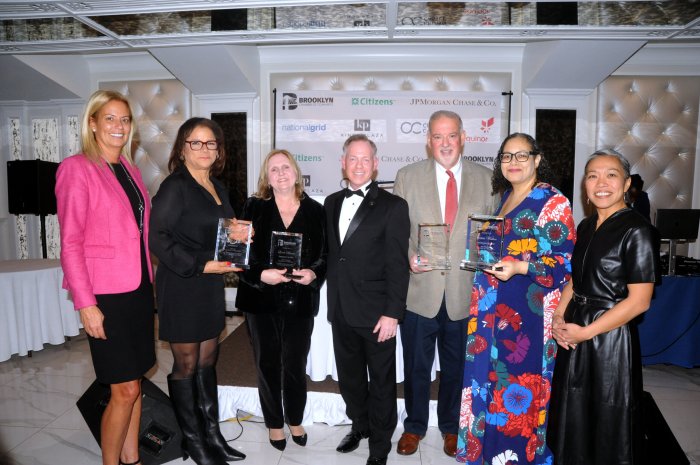Neighborhood leaders say the Mill Basin office of a city-run disaster-relief program that shares space with the local community board is making it much harder for the board to do its job, while doing very little good for the public.
The Build It Back office disrupts the board’s work but serves few residents, according to Community Board 18 district manager Dorothy Turano.
“They could work out of a phone booth for the amount of good they’re doing for the community,” Turano said.
When Turano mentioned the problem at a recent community board meeting, members of the audience started booing the program.
A city spokeswoman said the Mill Basin office has completed 1,350 scheduled appointments since it opened in late August last year — but it is not clear how many unique individuals the office has served.
Turano said she can see who goes in and out of the Build It Back office and is skeptical the program is helping many people.
“I don’t think they get five people in there a week,” she said. “Whoever comes in, as they’re leaving, they never leave happy.”
Build It Back is a federally funded city program that aims to provide hurricane-stricken residents with funding and resources to rebuild their homes or businesses.
Last August, then-Mayor Bloomberg called for a new Build It Back office to open in Mill Basin and ordered it to be placed in CB18’s meeting room — much to the consternation of the board members, who have since had to hold meetings at the nearby John Malone Community Center.
Turano said the program’s computer-heavy operation regularly overloads the building’s fuse box, triggering power outages.
“When they trip the circuit breakers, all our systems go haywire,” said Turano, who was without a computer for several hours on Monday due to complications from a power outage. She said the building’s security equipment is also affected.
Then there is the emergency exit, which is located in the Build It Back office. Build It Back workers lock the door to their office when they leave, Turano said, leaving only one exit in the case of an emergency and potentially endangering CB18 workers.
Late last year, there was a glimmer of hope that the community board might reclaim its meeting room, but that light seems to be flickering out.
During the November mayoral campaign, Mayor DeBlasio offered to help move Build It Back from the site, according to Turano. Now that the election is over, the board is asking him to follow through.
“We’re looking for him to help now,” she said.
But a spokeswoman for the mayor’s office said Build It Back is not going anywhere.
“There are no plans to close the site at this time,” spokeswoman Amy Spitalnick said in an e-mail.
The city says nearly 26,000 New Yorkers have signed up with the program, though virtually none have yet received a penny of the $600 million in federal money promised — and Build it Back doesn’t plan to get any of the actual reconstruction started until July 2015.
Almost 8,000 Brooklynites have signed up, according to a March presentation from the city — about 30 percent of the total.
Last month, Councilman Mark Treyger (D–Coney Island) called for the program to re-open its registration process, which closed last October, after learning that only 876 Coney Islanders had signed up.
The Council’s Recovery and Resiliency Committee, which Treyger chairs, will hold an oversight hearing on Build It Back and the post-Sandy housing recovery at 10 am on March 31 in the Council chambers.


















